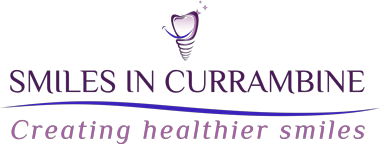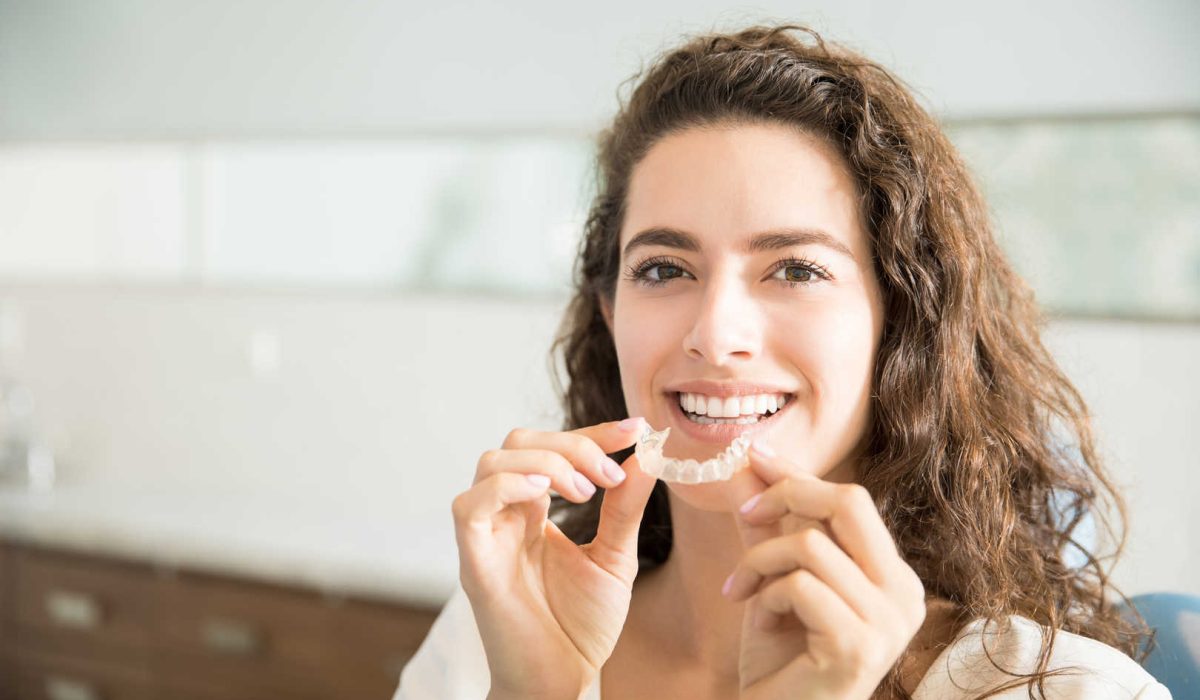A confident smile may do wonders for one’s appearance and leave a lasting impression. Orthodontic procedures provide a technique to straighten crooked teeth and address a variety of dental problems for those looking to achieve a more aesthetically pleasing smile. The most popular orthodontic treatments are traditional braces and clear aligners, which are both available. To select the best alternative, you must first understand the differences between the two.
Table of Contents
ToggleClear Aligners: A New Approach to Orthodontics
How Do Clear Aligners Work?
Clear aligners, such as the well-known Invisalign, have transformed orthodontic procedures. These clear, custom-made trays fit comfortably over your teeth and gradually reposition them. A series of aligners are used throughout treatment to move the teeth into the proper positions. Each pair is worn for around two weeks before switching to the next.
Benefits of Clear Aligners
- Aesthetics
The transparency of clear aligners is their most noticeable advantage. They are a great alternative for folks who want a covert treatment option because they are almost completely unnoticeable. You may grin with assurance the whole time you wear transparent aligners instead of traditional braces, which are quite obvious.
- Accessibility
Clear aligners are simple to take out for eating, drinking, brushing, and flossing. This feature guarantees improved oral hygiene because it won’t interfere with your usual dental practice. Additionally, there are no dietary limitations throughout treatment because you may take out the aligners and eat whatever you want.
- Comfort
The smooth plastic makes clear aligners, eliminating the pain that metal braces frequently bring. As they gradually realign your teeth, they will feel comfortable since they are specifically made to fit tightly over your teeth. Additionally, there is a lower chance of mouth sores and irritations when there are no wires or brackets.
- Accuracy
Orthodontists use 3D technology to create a personalised patient treatment plan. Your orthodontist may provide you with a clear visual representation of the anticipated outcomes and the length of your treatment before you even begin wearing the aligners. This consistency enables you to anticipate how your grin will change over time.
Considerations for Clear Aligners:
While clear aligners come with a host of advantages, it’s important to note that they might not be the optimal choice for everyone:
- Adherence: Strict adherence is essential for successful treatment with clear aligners. You must use the aligners for 20 to 22 hours every day to achieve the best results. Failure to cooperate can impede development and increase the length of the therapy.
- Complexity: Clear aligners are an excellent alternative for mild to moderate orthodontic abnormalities
- Cost: Treatments using clear aligners may be more expensive than those with traditional braces, especially in complicated instances.
A Time-Tested Orthodontic Solution: Traditional Braces.
How Traditional Braces Function?
The teeth are progressively moved into their proper locations by applying steady pressure using traditional braces, which combine metal brackets, wires, and elastic bands. The orthodontist makes periodic modifications to guarantee stable development over the course of the procedure
Advantages of Traditional Braces
Let’s look at the advantages of traditional braces:
- Successful in Complex Cases:
Traditional braces have a successful track record of treating severe malocclusion and complicated tooth problems. In order to properly treat a variety of dental issues, orthodontists must be able to exert controlled, precise force on the teeth. Traditional braces are still good for people with severe misalignment or crowding.
- No Compliance Problems:
Traditional braces are a more permanent option, which means you won’t have to worry about your teeth slipping back out-of-place once your treatments over. There is no need to worry about taking them out for eating or other activities once they are placed on your teeth. Your teeth are constantly being moved by the braces in the direction you want them to be.
- Cost-Effective:
Traditional braces are typically reasonable. They are more affordable for a wider variety of patients because of the materials they employ. It might be a great alternative for people seeking an orthodontic treatment option that is both effective and affordable.
- Suitable for Everyone
Patients of all ages can use traditional braces. Traditional braces can be tailored to the needs of patients of different ages, making them a versatile alternative for both adults and teens. Orthodontists customise the treatment plan to the patient’s requirements and oral health, making it a flexible choice for a wide range of patients.
Traditional braces: Things to consider
Traditional braces do come with a few drawbacks to consider, though:
- Aesthetics: During the course of therapy, some people may feel self-conscious due to the exposed metal brackets and wires.
- Challenges with oral hygiene Cleaning around the brackets and wires need to be done with additional care while using braces for oral hygiene.
- Soreness: Braces might temporarily make you feel sore and uncomfortable, especially after each adjustment.
Considerations for Your Decision
Making the selection between clear aligners and traditional braces is important and calls for serious thought. Which treatment choice is best for your unique requirements and preferences might depend on a number of things. The following are some crucial factors to bear in mind:
- Needs in Orthodontics
Which treatment will best handle your dental problems depends critically on how complicated they are. Traditional braces could be better if you have severe malocclusion, crowding, or other complicated dental issues. Traditional braces are more versatile and provide more control in the treatment of different orthodontic concerns.
Clear aligners, on the other hand, work well for mild to moderate instances of misalignment. They are effective in treating modest malocclusion, spacing issues, and slight crowding. If your orthodontic requirements fall within this range, transparent aligners could be a practical and attractive choice.
- Aesthetics
A natural look throughout orthodontic treatment is essential for many patients who prioritise aesthetics. With their translucent and nearly undetectable form, clear aligners are renowned for their discretion. Clear aligners may be your preferred option for treatment if you would rather be able to smile with confidence without anybody seeing that you are using orthodontic equipment.
On the other hand, traditional braces are more noticeable due to their metal brackets and wires. Others can feel self-conscious about their looks while undergoing treatment, while some people embrace traditional braces as a fashion statement.
- Comfort
There are comfort issues with both traditional braces and transparent aligners. Clear aligners are generally smooth and less prone to irritate the lips and cheeks. They don’t have any edges that are pointed or protruding, either. However, while your teeth become used to each new pair of aligners, they might initially be uncomfortable.
Due to the presence of brackets and wires, traditional braces might cause discomfort for certain individuals. However, advancements in orthodontic technology, including thinner and smoother brackets, have enhanced their comfort level. While minor oral discomfort or irritation may occur in some cases, it typically subsides within a few days.
- Period of Treatment
Clear aligners and traditional braces have quite different treatment times. In some circumstances, transparent aligners could provide a quicker recovery, especially for minor problems. The design of the aligners enables more regulated and predictable tooth movement, which may hasten treatment times.
Traditional braces, on the other hand, could necessitate a lengthier commitment, particularly for complicated situations that call for more thorough correction. Based on your individual demands and treatment progress, the orthodontist will estimate the length of time needed for treatment.
- Personal Habits
Think about how each treatment choice fits into your lifestyle and everyday activities. The benefit of removable clear aligners is that you may remove them for eating, drinking, brushing, and flossing. This indicates that you don’t need to adjust your usual eating and dental hygiene routines.
Traditional braces require more care since they are permanent items. There can be certain dietary restrictions necessary to protect the brackets and wires. To keep your teeth and braces clean during the course of treatment, you must practise consistent and comprehensive oral hygiene.
Conclusion
In conclusion, traditional braces and clear aligners provide efficient approaches to getting a stunning, straight smile. Many people find clear aligners appealing since they are discrete, pleasant, and simple to care for. On the other hand, traditional braces are a dependable and economical choice, especially for challenging cases.
Are you prepared to start the journey to your ideal smile? Visit Smiles in Currambine – see how we can assist you in achieving your orthodontic goals. Our skilled team of orthodontists is ready to help you on your path to an attractive smile. Make an appointment right away, and let’s work together to design the smile you’ve always wanted! Stop delaying; your beautiful smile is waiting.

Dr Saket Rai
Dr. Saket Rai is a passionate dentist with over 15 years of experience in general dentistry. He specializes in dental implants, wisdom teeth removal, laser dentistry, cosmetic dentistry, and Digital Smile Design. With a Bachelor of Dental Surgery degree and a Masters in Forensic Odontology, he stays updated with the latest dental technology and techniques. Dr. Rai has extensive training in dental implants and believes in continuous professional development to provide the highest standard of care. Outside of dentistry, he enjoys spending time with his two boys and has interests in reading, documentaries, and cricket.








